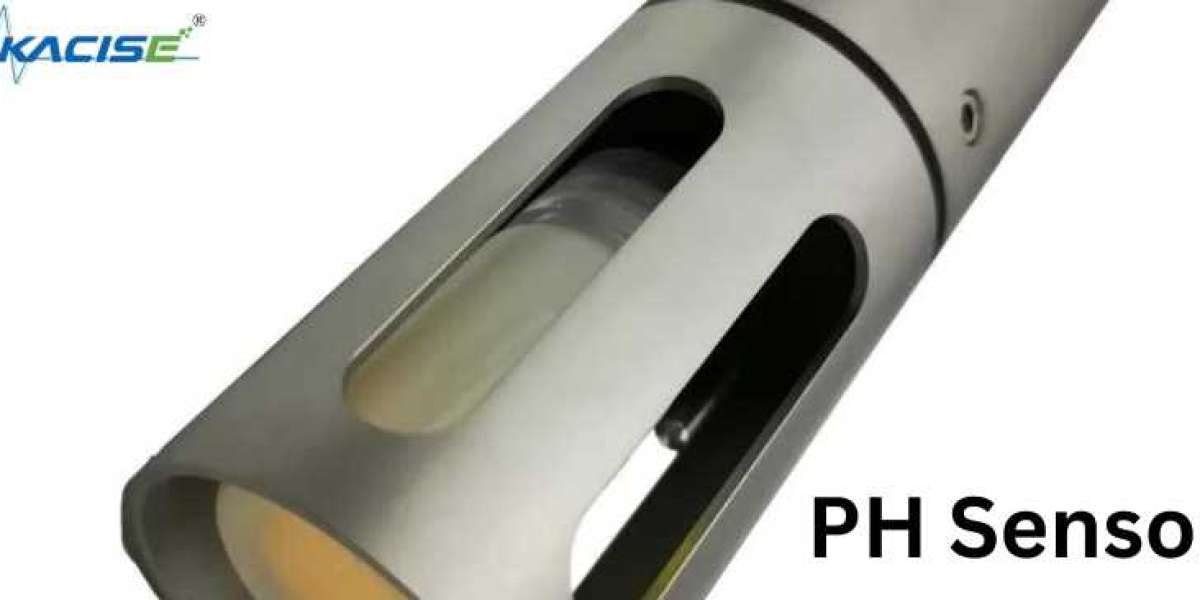Core Components
Glass Electrode: The most critical part of a pH sensor is the glass electrode, which is usually made of a special glass that is sensitive to hydrogen ions. The glass electrode is designed to generate a voltage that corresponds to the pH level of the solution. This glass has a membrane that interacts with hydrogen ions in the solution, creating a potential difference.
Reference Electrode: This electrode is made of metal, often silver/silver chloride, and is crucial for providing a stable reference voltage against which the glass electrode’s voltage can be compared. It ensures that the pH measurement is accurate by maintaining a constant potential.
Electrolyte Solution: Inside the reference electrode, there is an electrolyte solution, typically a potassium chloride solution. This solution helps maintain a consistent electrical contact and supports the reference electrode’s stable operation.
Junction: The junction is the point where the reference electrode and the glass electrode meet the solution. It allows the electrical current to flow between the reference electrode and the solution, enabling accurate pH measurement.
How It Works
Ion Exchange: When the glass electrode is immersed in a solution, hydrogen ions from the solution interact with the glass membrane. The glass membrane is selectively permeable to hydrogen ions, which means it allows them to pass through while blocking other ions. This selective permeability creates a potential difference across the glass membrane, which is directly related to the concentration of hydrogen ions in the solution.
Voltage Generation: The interaction between the hydrogen ions and the glass membrane generates a voltage. This voltage is not absolute but relative to the stable reference voltage provided by the reference electrode. The pH sensor measures this voltage difference, which varies with the pH level of the solution.
Signal Processing: The voltage difference generated by the glass electrode is extremely small, so it needs to be amplified and processed to determine the pH level accurately. The pH sensor has a built-in electronic circuit that converts this voltage into a pH value using the Nernst equation. This equation relates the voltage generated by the glass electrode to the pH level of the solution.
Calibration: To ensure accuracy, pH sensors must be calibrated regularly using standard buffer solutions with known pH values. During calibration, the sensor adjusts its readings to match these known values, compensating for any drift or changes in the sensor’s characteristics over time.
Applications and Considerations
pH sensors are used in various fields, including environmental monitoring, pharmaceuticals, agriculture, and water treatment. In environmental monitoring, they help track water quality by measuring the pH of lakes, rivers, and oceans. In agriculture, pH sensors are used to optimize soil conditions for crop growth. In pharmaceuticals, precise pH control is crucial for the production of medicines.
While pH sensors are highly useful, they require regular maintenance to ensure accurate readings. Factors such as sensor drift, contamination, and aging can affect their performance. Proper calibration, cleaning, and storage are essential practices for maintaining the reliability of a pH sensor.
In summary, a pH sensor operates through the interaction of hydrogen ions with a glass electrode, generating a voltage that is processed to determine the pH level of a solution. Its design, including the glass electrode, reference electrode, and electrolyte solution, ensures precise and reliable measurements across various applications.








